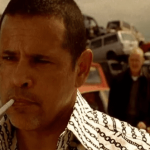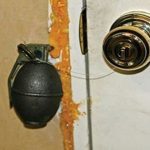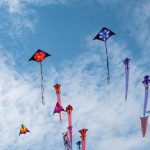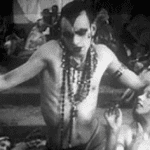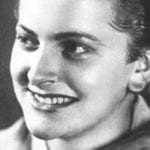 History
History  History
History  Animals
Animals Ten Times It Rained Animals (Yes, Animals)
 Mysteries
Mysteries 10 Devastating Missing Child Cases That Remain Unsolved
 Creepy
Creepy 10 Scary Tales from the Middle Ages That’ll Keep You up at Night
 Humans
Humans 10 One-of-a-kind People the World Said Goodbye to in July 2024
 Movies and TV
Movies and TV 10 Holiday Movies Released at Odd Times of the Year
 Politics
Politics 10 Countries Where Religion and Politics Are Inseparable
 Weird Stuff
Weird Stuff 10 Freaky Times When Famous Body Parts Were Stolen
 Miscellaneous
Miscellaneous 10 Interesting Things Manufacturers Stopped Making and Why
 Gaming
Gaming 10 Funny Tutorials in Games
 History
History 10 Desperate Last Stands That Ended in Victory
 Animals
Animals Ten Times It Rained Animals (Yes, Animals)
 Mysteries
Mysteries 10 Devastating Missing Child Cases That Remain Unsolved
Who's Behind Listverse?

Jamie Frater
Head Editor
Jamie founded Listverse due to an insatiable desire to share fascinating, obscure, and bizarre facts. He has been a guest speaker on numerous national radio and television stations and is a five time published author.
More About Us Creepy
Creepy 10 Scary Tales from the Middle Ages That’ll Keep You up at Night
 Humans
Humans 10 One-of-a-kind People the World Said Goodbye to in July 2024
 Movies and TV
Movies and TV 10 Holiday Movies Released at Odd Times of the Year
 Politics
Politics 10 Countries Where Religion and Politics Are Inseparable
 Weird Stuff
Weird Stuff 10 Freaky Times When Famous Body Parts Were Stolen
 Miscellaneous
Miscellaneous 10 Interesting Things Manufacturers Stopped Making and Why
 Gaming
Gaming 10 Funny Tutorials in Games
10 Fearless & Talented War Photographers Killed in Combat
Since the invention of the first photo camera in the early 1800s, journalists have been exploring the idea of capturing images of war. During the Crimean War of the 1850s, this idea was brought to life. It was one of the first examples of photography in a major military conflict. Since then, war photography has played a big role on the battlefield. It can quickly tell a story of suffering, reaching a broad audience in a way text is not always able to.
Exposing the public to images of war can make real the hardships people in these war-torn areas go through. However, it’s this powerful imagery that can lead us to forget who’s behind the camera. War photographers make dire sacrifices to spread awareness of what is going on during times of war. Some will even lose their lives. Ten of these photographers stand out for their bravery and for capturing images that are still used to teach history.
Related: Top 10 Fascinating Historical Photographs
10 Robert Capa
Born Endre Ernő Friedmann, Capa was an esteemed and well-practiced war photographer, gaining fame in 1936 for his work in the Spanish Civil War. It was there that he captured one of his most highly regarded photos, “Death of a Loyalist Soldier.” Capa left Europe and moved to the United States at the start of World War II in 1938. Here, he started working freelance for a handful of publications, such as LIFE Magazine. In 1941, on assignment for LIFE, Capa traveled parts of Europe and northern Africa with the U.S. Army. Arguably, some of his best works from this time came from Omaha Beach, where he documented the start of the invasion of Normandy.
After the war, Capa returned to the U.S. and co-founded Magnum Photos. Most of his time was spent helping new photographers until 1954, when he volunteered to document the First Indochina War for LIFE. While in the Thái Bình province of Vietnam, Capa strayed from the group of soldiers he was traveling with. Shortly after, he stepped on a landmine, killing him. His career lived up to his famous quote, “If your pictures aren’t good enough, you’re not close enough.”[1]
9 Gerda Taro
Despite not having a long career, with the help of her close ties to Robert Capa, Taro still had a fruitful one. She was a Jewish woman living in Leipzig, Germany, during the Nazis’ rise to power, and because of this, she moved to France. It wasn’t until she met German photographer Tim Gidal at work that Taro developed an interest in the art form. This interest was heightened a year later, in 1934, when she met Robert Capa. The two became lovers and later moved in together. While Capa was gone for long periods on assignments, Taro would work for a friend as a darkroom assistant. Here, she began learning the basics of photography. With this newfound knowledge, she would get a job at Alliance Photo in October of 1935.
Taro and Capa continued to develop their photography skills. By 1936, the couple was working together for Vu magazine, covering the Spanish Civil War. By July of 1937, Taro was confident enough in her work to go on trips by herself. On one of these solo trips on July 25, she visited the front in Brunete, Spain. Shortly after arriving in the city, German planes began bombing the area. While seeking shelter, Taro found a press vehicle to climb onto. During the retreat, a tank collided with the car, knocking Taro off and crushing her. She was transported to a nearby British military hospital. However, she died of her injuries the next day.
Taro was the first female war photographer to die as a result of combat.[2]
8 Tim Hetherington
Starting his education in literature, Hetherington received his degree from Oxford in 1992. Shortly after, he developed a deep interest in visual media and got a second degree in photojournalism from Cardiff in 1997. Following a short stint working for the Big Issue, Hetherington was more content working independently on projects he thought were more important for the world to know about. He wanted to be the one crafting the narrative, telling the stories of human suffering that led him to spend eight years in Africa, where he published most of his works.
His first years were spent documenting the Second Liberian Civil War with fellow war photographer James Brabazon. The two would create the documentary Liberia: An Uncivil War. He then took time to document ongoing rehabilitation efforts throughout Africa—most of which were centered around sports, helping child soldiers return to normal life. Hetherington would briefly enter the Niger Delta region to cover conflicts over natural resources before going to Afghanistan. Here, he would join soldiers of the United States Army and film documentaries about their daily lives and the lives of local civilians.
In 2011, he traveled to Libya to document the anti-Gaddafi uprising and civil war. In the town of Misrata on April 20, Hetherington and fellow war photographer Chris Hondros were killed in a mortar attack by Libyan forces.[3]
7 Chris Hondros
Hondros started with a degree in literature before finding work as a war photographer at Getty Images. He stayed there his entire career. Starting by covering conflicts across Africa, it was in Liberia during the Second Civil War that Hondros would claim a spot with the greats. His image of Joseph Duo, a young man fighting since the age of 14, would be widely published across media outlets during the early 2000s. Hondros would later go back to Liberia to meet Duo again and even pay for him to return to school, which he wrote about in a post online.
After his years in Africa, Hondros would spend a lot of time in the Middle East with the United States military, documenting patrols. One incident in Tal Afar, Iraq, had Hondros in the dark of night with soldiers at a military checkpoint. The soldiers were alerted to a vehicle in the distance, and after unsuccessfully trying to get them to stop, they fired into the vehicle. Inside were six children, one of whom was grazed in the abdomen, and two dead parents. It was here that Hondros got another one of his legendary photos. One that looks to be out of a Hollywood film. A child crouched on the ground, covered in blood and crying, with a soldier standing next to them.
In 2011, Hondros traveled to Libya to document the civil war, and with Tim Hetherington, he was killed by a mortar attack in Misrata on April 20.[4]
6 Larry Burrows
Born in London in 1926, Burrows always had an interest in the arts. Starting his career covering conflicts in northern Africa, he wouldn’t gain notoriety until 1962, when he began his nine-year journey documenting the Vietnam War. While most war photographers of the time were still shooting in black and white, Burrows would often opt to use colored film, which gave his photos a distinct perspective.
It was this, paired with his desire to experience the war through the eyes of a soldier, that gave his images an intimacy seldom found at the time. He would live with soldiers in their camps, fly on helicopters during combat missions, and stay on the front lines when fighting broke out. While most of Burrows’s images would portray the aftermath of such fighting with images like “Reaching Out,” he would still find time to compose photos during battle, like his photo essay “One Ride with Yankee Papa 13.”
This intensity and closeness would remain in Burrows’s work for his entire career, up until his death. On February 10, 1971, while flying over Laos in a helicopter, Burrows and four other war photographers were shot down. No one survived the crash.
Following Burrows’s death, managing editor for LIFE Ralph Graves would go on to say, “I do not think it is demeaning to any other photographer in the world for me to say that Larry Burrows was the single bravest and most dedicated war photographer I know of.”[5]
5 Yaser Murtaja
Murtaja was a Palestinian war photographer from Gaza who co-founded Ain Media in 2012. His works were mostly focused on human rights in the region. While on one such excursion covering protests in Khan Younis on April 6, 2018, Murtaja was shot in the abdomen by an Israeli sniper. Later in the night, Murtaja succumbed to his injuries and passed away.
His death sparked an outcry among human rights activists and journalists in the area. In response, Israeli Defense Minister Avigdor Lieberman said, “Whoever operates drones above IDF (Israeli Defense Force) soldiers needs to understand that he is endangering himself. We have seen dozens of cases of Hamas activists disguised as medics and journalists.” Despite this, fellow journalists on the ground would say that Murtaja was not operating any drone at the time he was shot and that he was wearing a helmet and vest, both marked with “PRESS.”
Claims that the IDF was targeting journalists would become widespread, and on April 7, the IDF denied this claim, stating they would be opening an investigation into the death of Murtaja. However, an investigation was never opened, stating, “No suspicion was found, which would justify the opening of a criminal investigation.” Murtaja lives on through his fellow journalists in the region as the conflicts in Gaza continue to this day.[6]
4 Kenji Nagai
Nagai was a Japanese war photographer working with Tokyo’s AFP News. With them, he became familiar with being in dangerous areas. He took assignments in the Middle East from the late 1990s to the early 2000s before arriving in Myanmar to document the Saffron Revolution. On September 27, 2007, in Yangon, Myanmar, troops took to the streets, where they began firing on protesters, killing at least nine, as reported by several news outlets; however, the exact number is unknown. Among them was Nagai. Initial reports from Myanmar officials claimed that Nagai was killed by a stray bullet.
Video taken of the incident circulated on Japanese television, showing a soldier walking up to Nagai and pointing a rifle at him before he fell to the ground. This called into question the claims of local officials. The Japanese embassy in Myanmar later confirmed that the trajectory of the projectile through Nagai’s body was not consistent with a stray bullet.
It is still not certain whether it was a stray bullet or whether Nagai was specifically targeted. Still, the consensus among those involved leans toward it being intentional. Photographer Anrees Latif, who was also in Yangon, would go on to win a Pulitzer Prize for a photo he took of Nagai the moment he hit the ground.[7]
3 Dickey Chapelle
A Wisconsin-born woman, Chapelle received her education in engineering at MIT before finding her passion in photography. She started her career at TWA in New York, later landing a job with National Geographic as a war photographer. Chapelle’s career took off following her work in the Pacific during World War II, where she traveled with U.S. Marines across Iwo Jima and Okinawa.
She made a brief appearance in Cuba and in Hungary during the Hungarian Revolution. There, she was jailed for nearly two months for smuggling medical supplies into the region. Her career then culminated during the Vietnam War, where she traveled with several United States military groups and even became the first war photographer to parachute with troops.
Unfortunately, on November 4, 1965, while on patrol with her unit, a marine walked into a tripwire, detonating a grenade. After being struck with shrapnel, Chapelle passed away in a helicopter on the way to a hospital. Despite being a civilian, the military would honor Chapelle at her funeral and during the 50th anniversary of her memorial.[8]
2 Gilles Caron
Gilles Caron of France lived a short life but was still able to create a place in history for himself as an exemplary war photographer. In 1959, he served two years in the French military due to France’s compulsory service at the time. In 1961, he spent two months in prison for refusing to fight before finishing his service in 1962.
After a brief run in fashion photography, he joined APIS (Agence Parisienne d’Informations Sociales) in 1965. There, he started finding success as a photojournalist but didn’t stay long before moving to the photo agency Gamma in 1967. With them, he finished his career as a war photographer. For three years, he traveled the world, covering conflicts. Israel in 1967 during the Six-Day War, and Vietnam that same year. Then, to Biafra in April 1968 to cover the Nigerian Civil War. Toward the end of 1968 and 1969, he covered protests and a few more minor conflicts throughout the world.
In 1970, Caron traveled to Cambodia during the coup. On April 5, while traveling on Khmer Rouge-controlled Route One, Caron went missing. He was never heard from again and was declared dead on September 22, 1978.[9]
1 Army Specialist Hilda Clayton
Clayton enlisted in the military on September 21, 2011, for the role of 25V, the Army’s designation for Combat Documentation and Production Specialists. She was assigned to the Army’s 55th Signal Company following her training and was deployed to the Laghman province of eastern Afghanistan in support of Operation Enduring Freedom.
On July 2, 2013, she was documenting a joint live-fire exercise with Afghan troops in the city of Jalalabad. During this exercise, one of the mortars she was standing next to malfunctioned and exploded, killing her. Her camera survived the explosion and was still recording. On it were surreal images of Afghan soldiers huddled around the mortar as it exploded. As a result of the incident, Army Specialist Hilda Clayton and four Afghan National Army soldiers lost their lives.[10]



